Hummus (The Traditional Tasty Way)
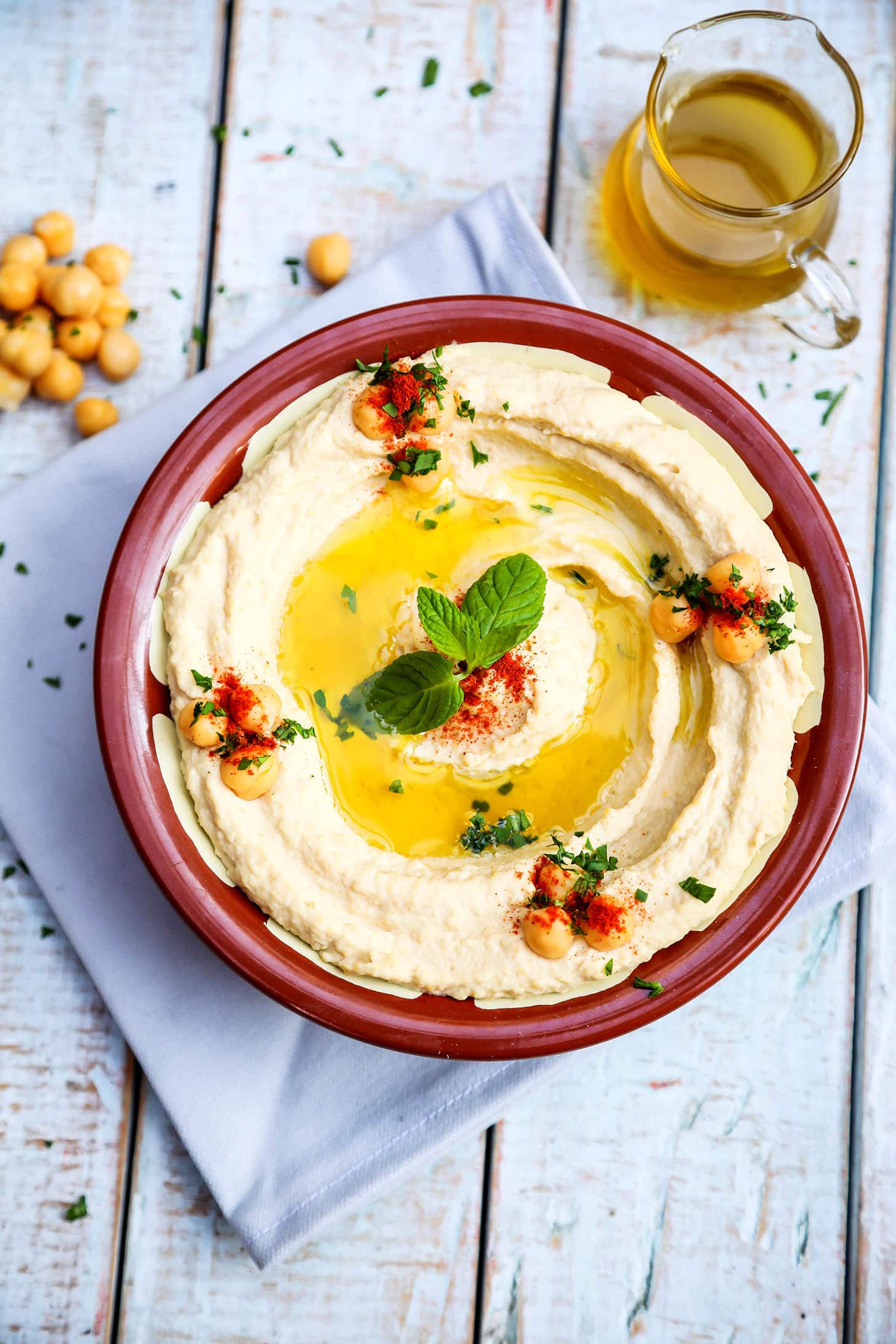
There is nothing as good or satisfying as homemade hummus, served at your very own kitchen table.
This very nutritious, and popular food is incredibly easy to make, but a bit harder to make well.
Have no fear, follow this great recipe, and you will end up with a lovely authentic plate of Middle Eastern hummus.
Naturally gluten free, this garbanzo bean treat is full of goodness, and will keep you full for a long time.
Once you learn to make your own, you will never go with a store bought brand again, the difference is stark.
What is Hummus Dip?
It is a Chick pea dip that is widely eaten throughout the world today, and originated in what is the present day Middle East.
Hummus is also the Arabic wording meaning chickpeas or garbanzo beans, and is used interchangeably.
Cooked chickpeas are mashed, then mixed with sesame seed paste, lemon juice and garlic.
This simple, cheap food is the staple of many households with limited budgets trying to feed their families wholesome meals.
Relatively high in calories, this dip packs a punch, which when drizzled with olive oil fends off hunger for a good long while.
With 200 calories in every 1/2 cup, providing six grams of protein, hummus is a filling breakfast, lunch or dinner.
Many people eat this delicious dish as an afternoon snack along with vegetables for dipping.
What’s the Deal With the Skins?
One of the prerequisites to making good hummus is to have a very powerful blender, or food processor.
The reason for this is that authentic hummus needs to be velvety smooth with no bits in it.
Not everyone has this type of machine and therefore removing the skins from the cooked chickpeas gives the hummus a nicer texture.
And even if you have one of those powerful machines it is still a positive move to remove the skins.
Getting all the skins is not really possible, but if you get the majority then you are doing well.
The good news is that it’s pretty simple to do.
Cook dried chickpeas, after soaking, with a little baking soda which will loosen the skins.
After cooking until chickpeas are soft, remove from the hot water and place in a bowl of cold water.
The skins will come off and many will float, if the skins settle back down, stir the water until they float again.
Then scoop them off the top of the water using a skimmer or sieve.
What Are the Ingredients of Traditional Hummus
These days all you have to do is walk down the hummus aisle of your grocery store and see tubs of countless flavored hummus.
These are modifications of traditional hummus, and in some cases very good additions to a long history of tradition.
The classic hummus recipe consists of only five ingredients and nothing more, served with olive oil and pita bread.
These ingredients are:
Chickpeas (Garbanzo Beans): One of the first cultivated legumes, the chickpea has been contributing to a nutritious diet for a long time.
First appearing in what is the Middle East today, chickpeas are grown, and eaten all over the world.
Lemon Juice: An important ingredient in many foods of the Middle East, lemon juice is also used as a preservative.
Giving hummus its lovely tangy flavor, lemon juice can be be adjusted for taste.
Tahini: Sesame seeds that have been ground into a paste, in Arabic the literal meaning of tahini is to have been ground.
High in calories and nutrition, tahini is a common added ingredient to various dips and sauces.
Garlic: Easily one of the most popular ingredients in Middle Eastern cooking, garlic is used very often.
Besides offering a lovely flavor to your dish, garlic also possesses antibiotic properties that are beneficial.
Salt: An ancient ingredient with a long history, salt is a crucial ingredient in many dishes right around the world.
At one point a valuable commodity, salt in the historical Middle East was used not only in food but as a symbolic element to close a deal.
An Additional Note on Tahini
Where your tahini comes from will make a difference to how your recipes turn out.
Tahini is the Arabic word for this paste of ground sesame seeds, and sourcing tahini in the Middle East can be an art.
Having your tahini ground fresh adds so much flavor that grocery stores in many Arab countries have grinding stations.
Making your own is easy as long as you have a high powered food processor or blender.
Several store bought brands are certainly good substitutes for fresh, and there are some to avoid.
Some of the best brands are, Mighty Sesame Co., Beirut Sesame Tahini Paste, and Al Wadi.
Avoid anything that has been allowed to sit for a long time and is already separated in the jar, Krinos is one that comes to mind.
The oil in tahini will naturally separate with time, leaving the oil at the top while the thick paste drops to the bottom.
If tahini sits on a shelf too long the paste at the bottom begins to turn hard, basically meaning it’s old.
You can blend it back together using a good blender but at that stage the flavor will be compromised.
Another issue to look out for is the oil going rancid, at which point it will need throwing away.
You want to store an unopened tahini for up to six months for best results, and a couple of months once opened.
How to Make Traditional Hummus
Chickpeas are stored in a couple of ways, one is in dried bean form.
The other is canned, or packaged.
In this recipe I use canned chickpeas for ease, but it is perfectly straightforward to start with dry beans.
Dry chickpeas will need to be soaked for at least 12 hours to rehydrate the legumes.
And then cooked in water to soften the beans.
Changing the water after soaking is also a good practice.
This will reduce the possibility the beans cause uncomfortable gas to the eater.
Using canned beans will skip the whole process of soaking, and initial boiling.
I like to boil my canned chickpeas for about 20 minutes with baking soda to help remove the skins.
Once boiled, remove the chickpeas from the water and put them in a bowl of cold water which will help remove the skins.
Remove the skins that are floating and rub the beans in the bowl to dislodge any other skins to peel the chickpeas.
An important step when making traditional hummus is to process the lemon juice and tahini as the first step.
This process allows the tahini to emulsify with the lemon juice making a single sauce.
Add the chickpeas, garlic and salt and process, scraping down the sides as you go.
Don’t be afraid to give extra time to making sure that you get a good smooth texture.
Traditional hummus tends to be rather lemony, and this recipe is no exception, however some prefer a less lemony taste.
If this is the case for you, simply reserve some of the liquid from the canned chickpeas.
Use a ¼ cup of liquid plus a ¼ cup lemon juice with the tahini in place of the ½ cup of lemon juice.
Maximize the Ways to Use Hummus
Homemade hummus will stay fresh for up to five or six days in the fridge, and can be used in a variety of ways.
Eating hummus drizzled with olive oil straight from the bowl with pita bread is the traditional way to eat this dish.
Eating the hummus by dipping raw vegetables in it is another common and healthy way to consume as a dip.
Spread hummus in a sandwich with pitted olives and pickles; a delicious treat for the taste buds.
Add to a falafel or foul mudammas sandwich for a traditional taste of the Middle East.
Another fine mixture is to pair hummus with roasted red peppers, and roasted eggplant.
A distinct specialty is to serve hummus topped with chopped grilled lamb meat, and toasted pine nuts; heavenly.
Coarsely chop cherry tomatoes, cucumber, and mint leaves, stir into the hummus and spread on bread.
Enjoy trying your own combinations with one of the most loved dips on the planet.
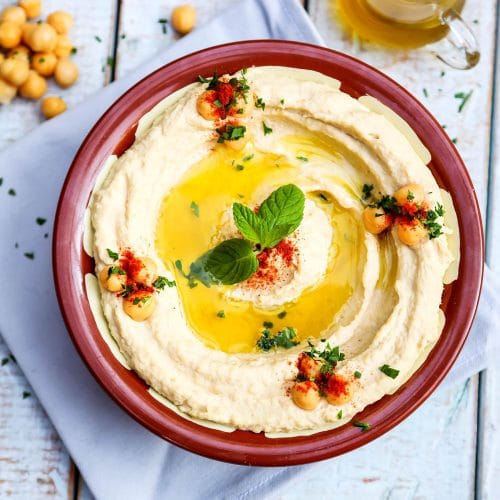
Hummus Recipe
Ingredients
- 2 cups Chickpeas canned
- ½ cup Tahini
- ½ cup Lemon Juice
- ¾ tsp Salt
- 1 clove Garlic crushed
- 1 tsp Baking Soda
Instructions
- Boil the chickpeas for 20 minutes with the baking soda, the place in cold water.
- Remove as many skins as you can by skimming them off the top. No worries if you can't get them all.
- Place the tahini and lemon juice in a food processor or blender.
- Process or blend until a thick sauce emerges.
- Add the chickpeas, garlic and salt.
- Blend until creamy and smooth.
- If too thick blend in a couple of tbsps of cold water.
- Serve in a bowl, and drizzle with olive oil.

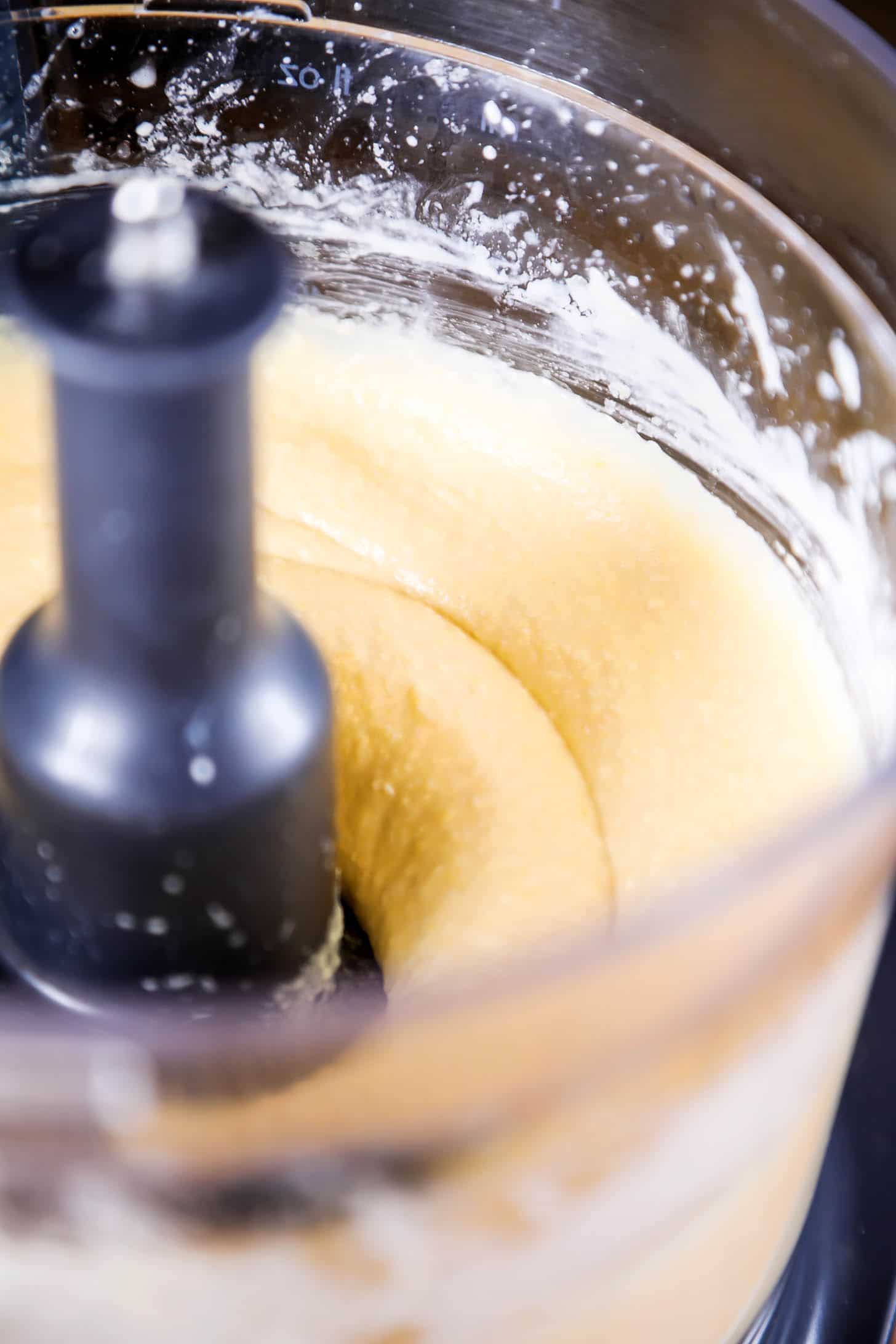
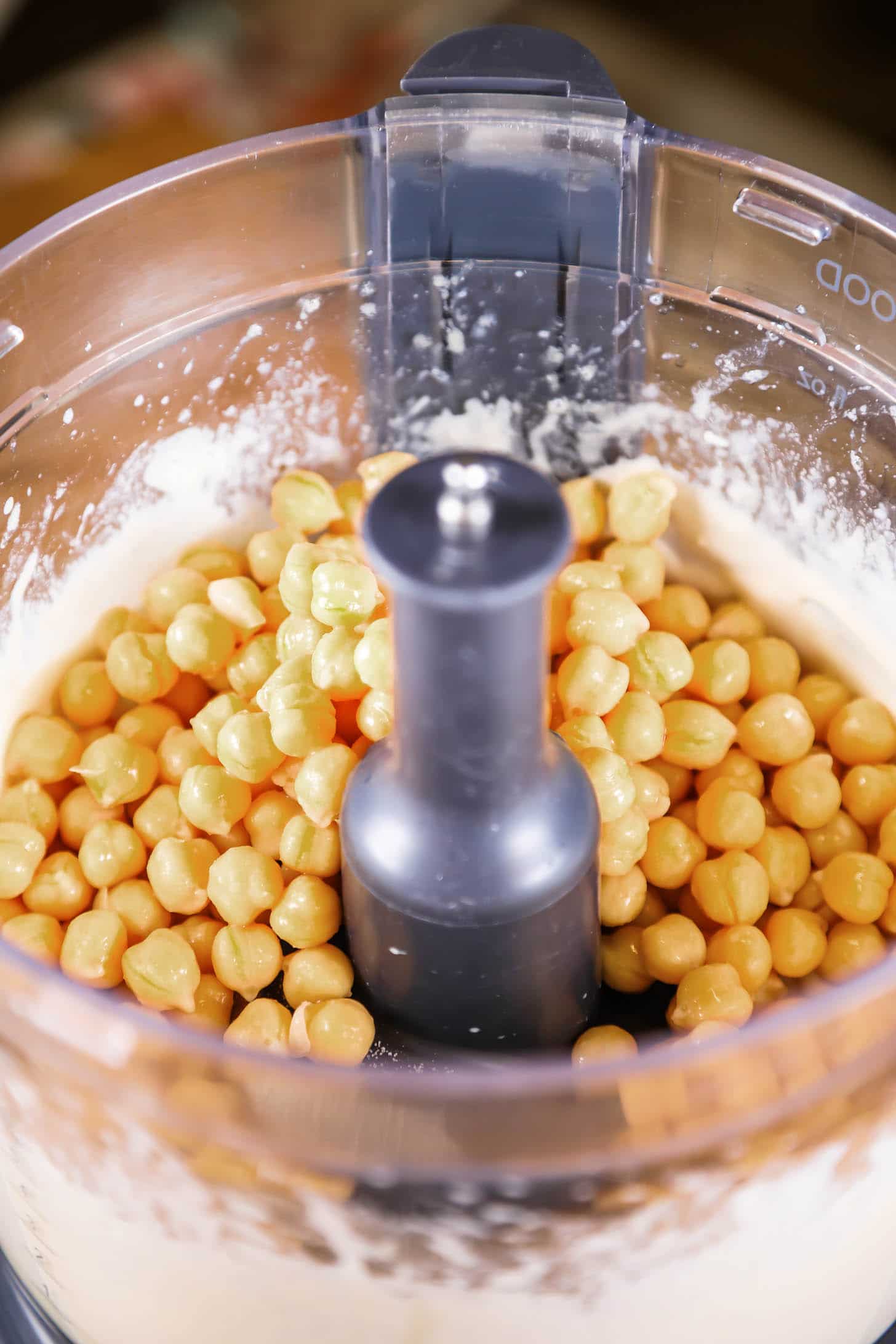
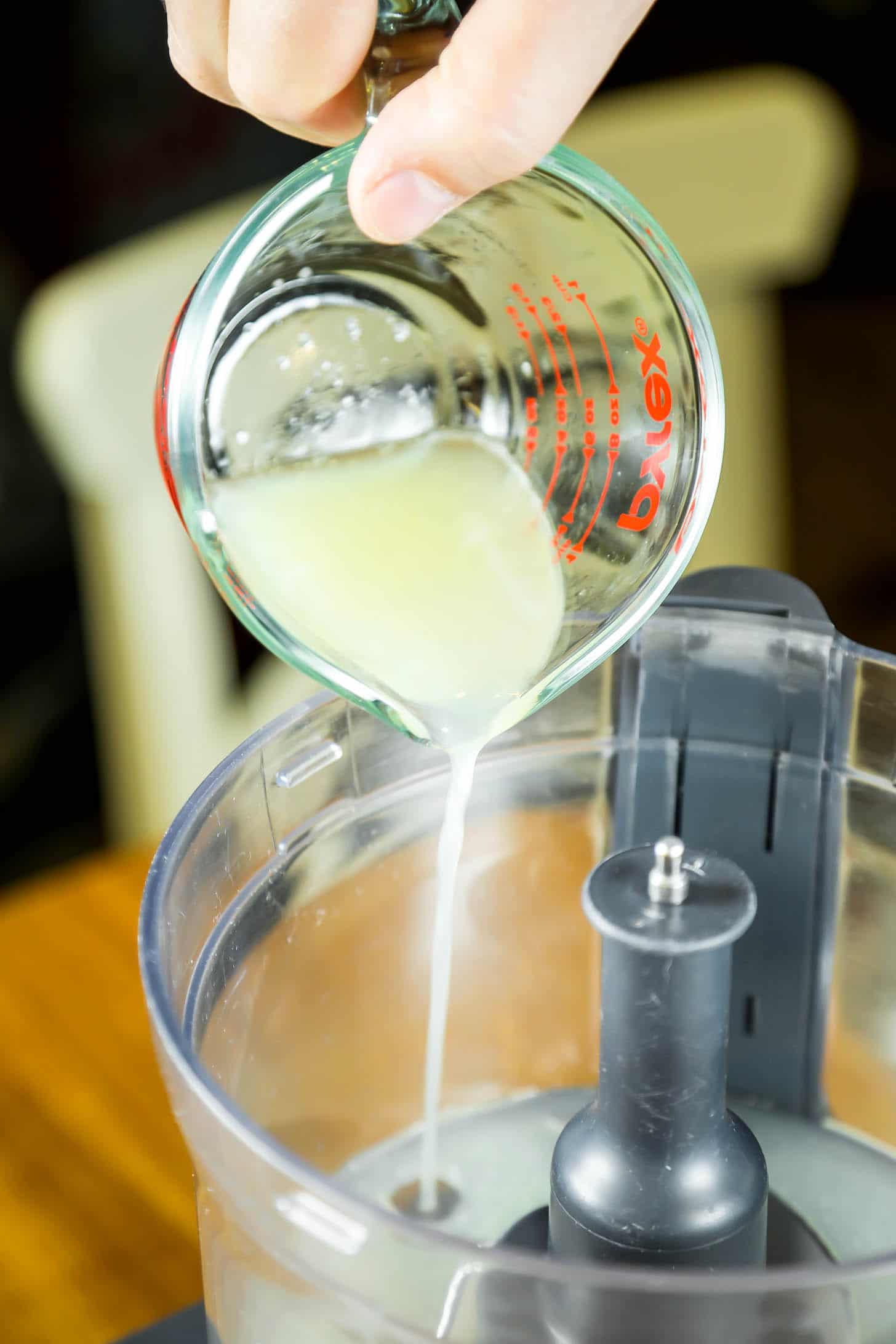
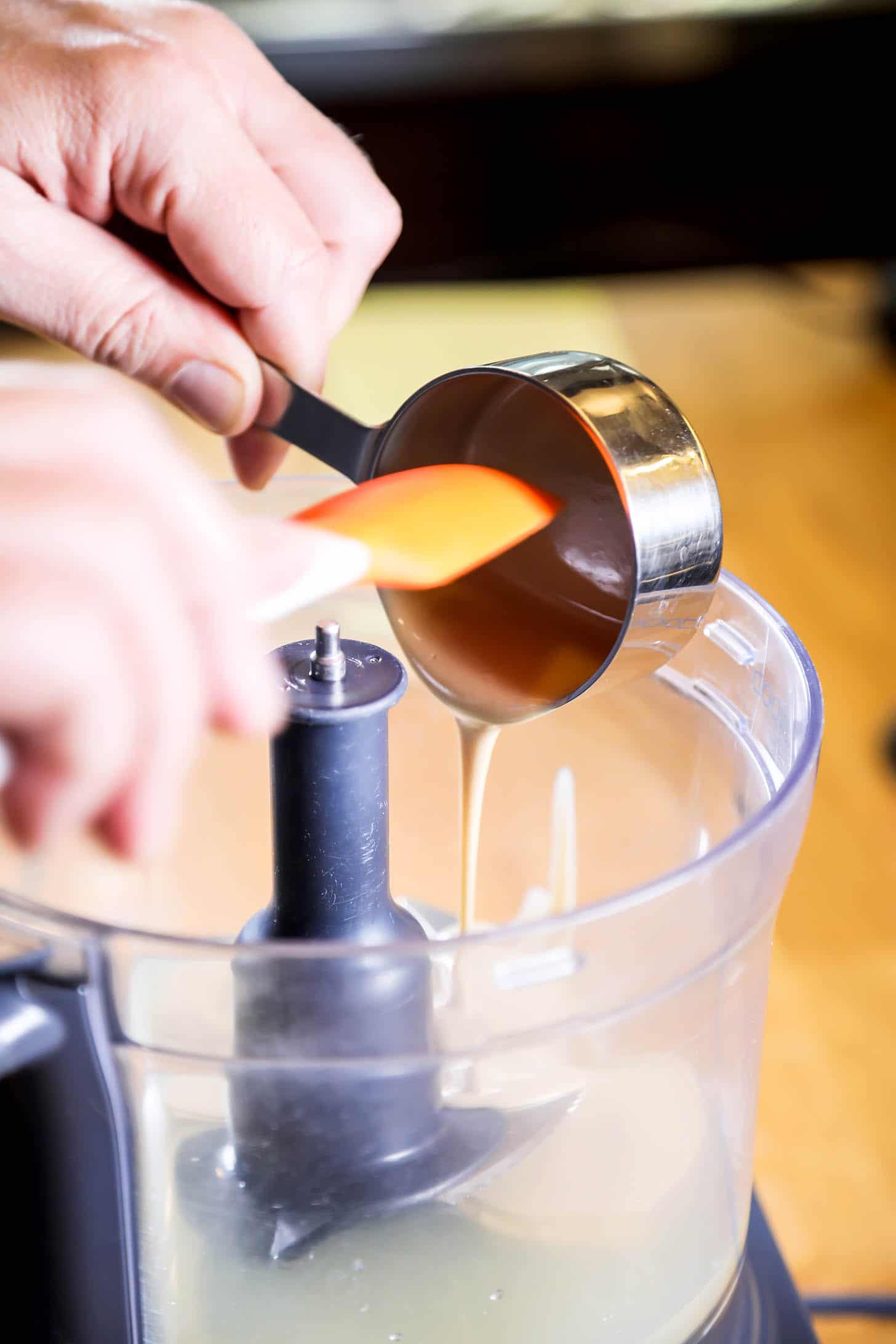
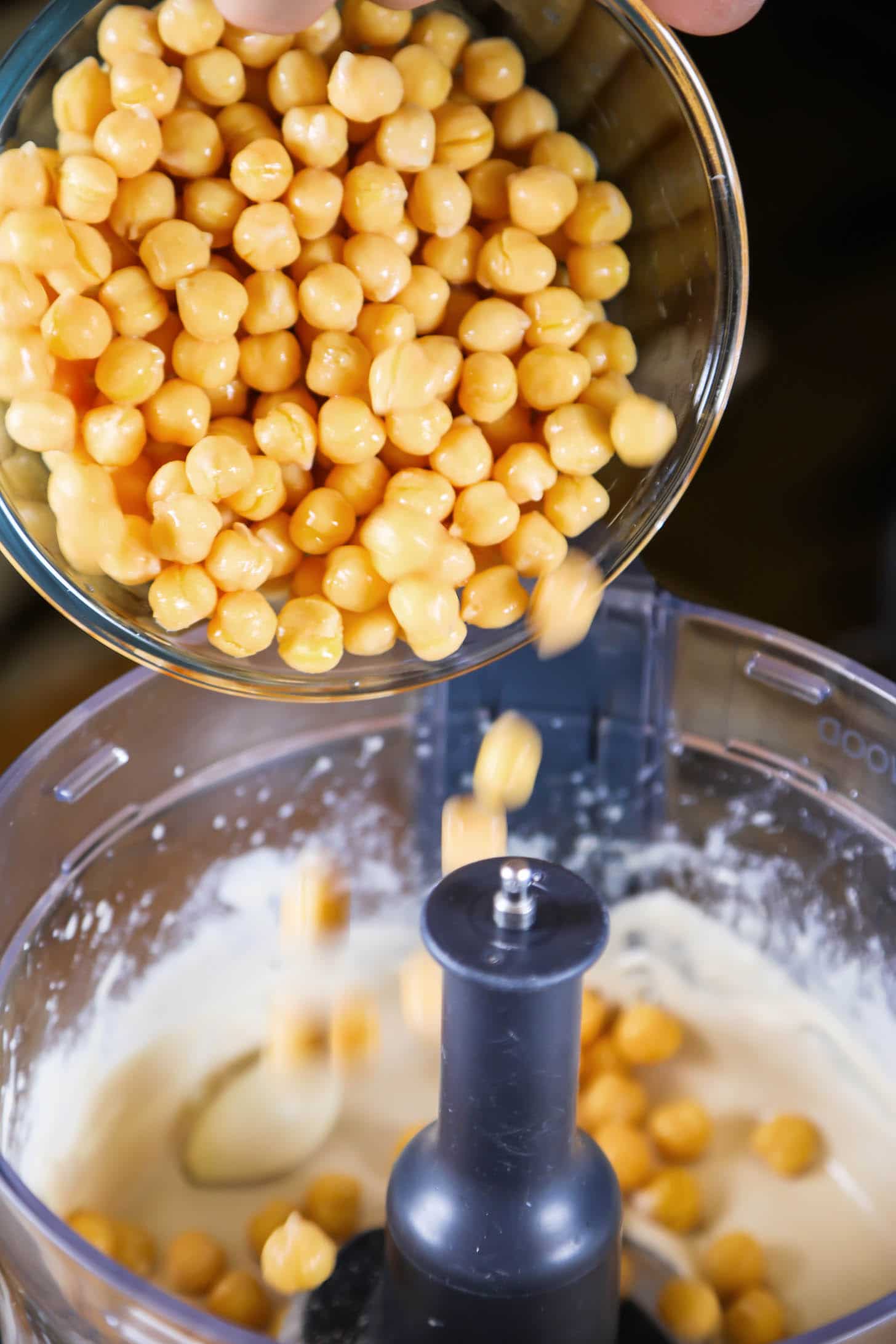
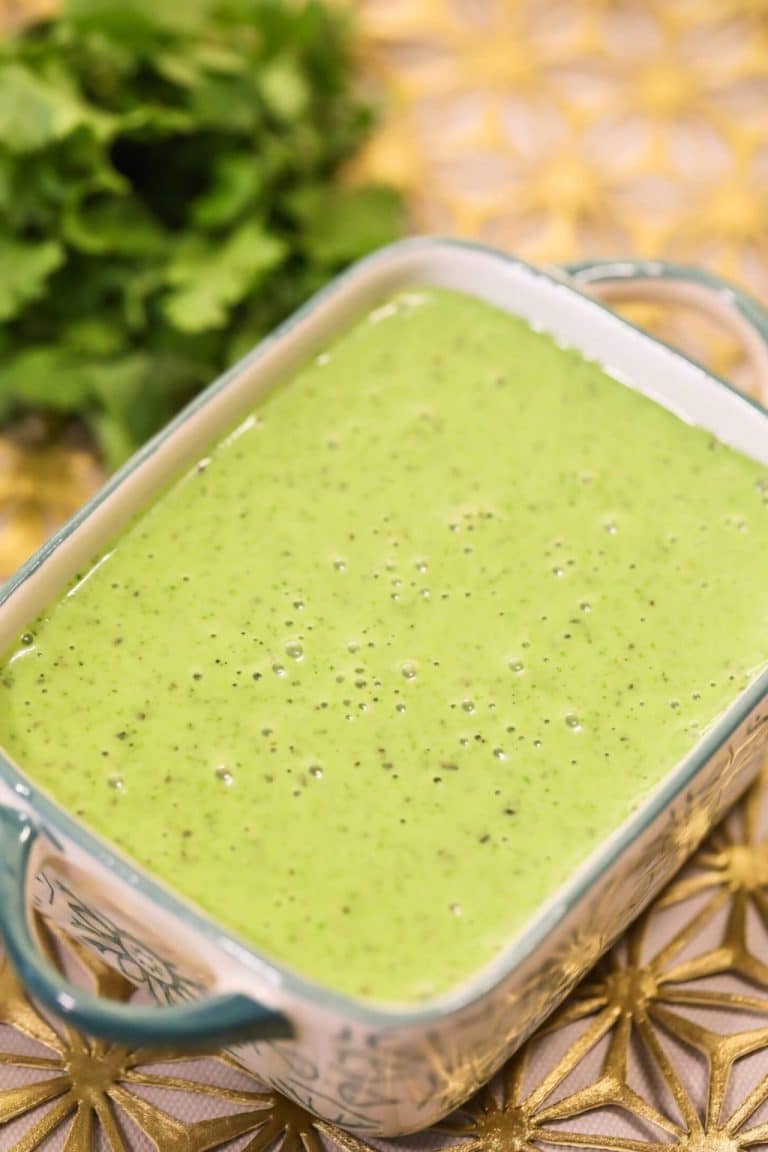
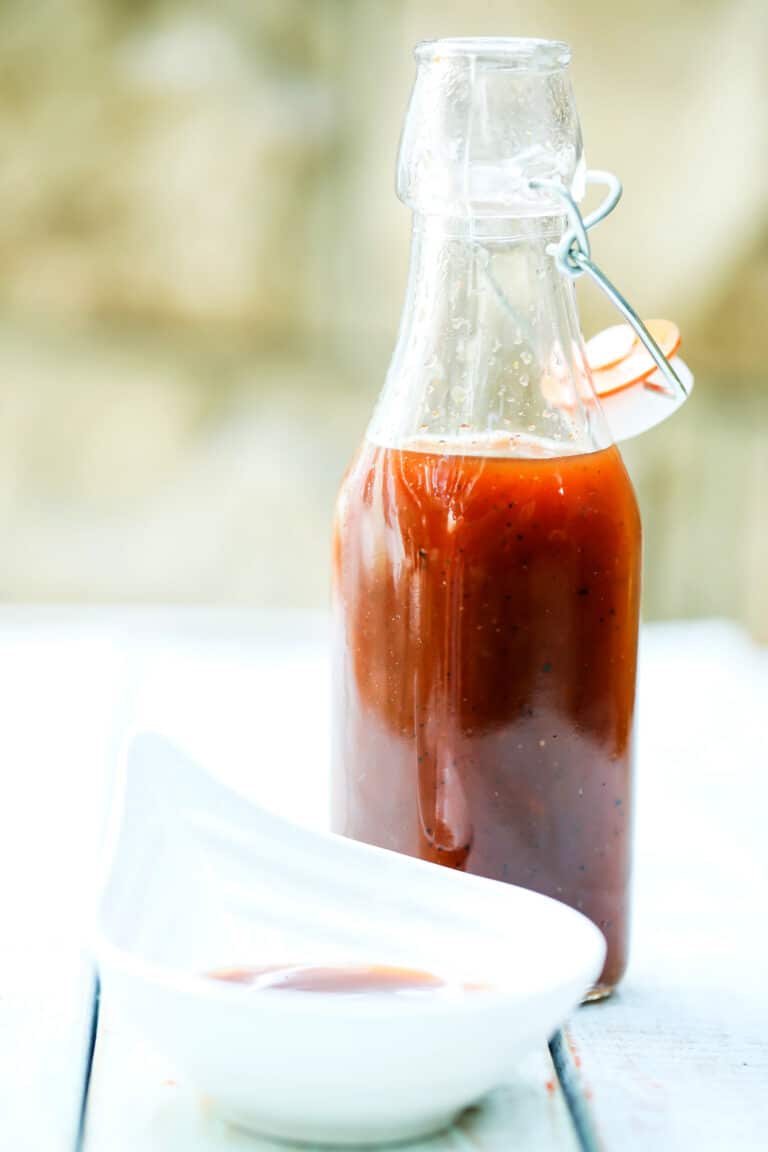
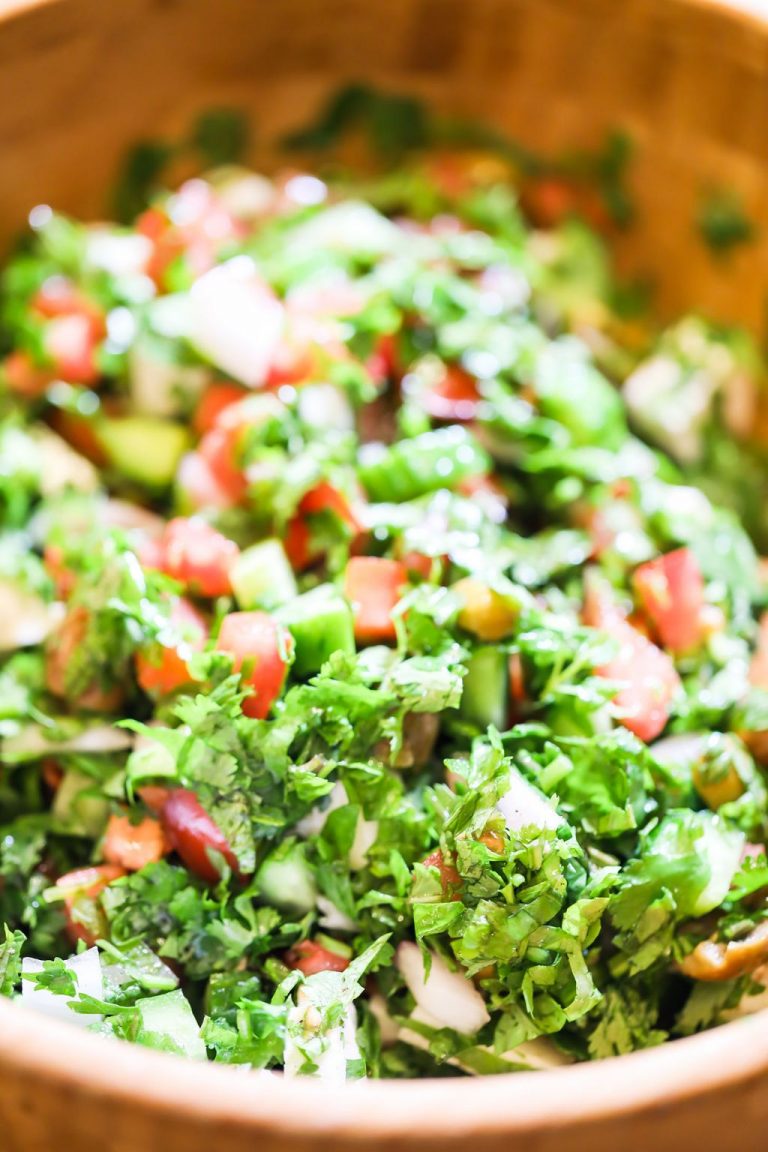
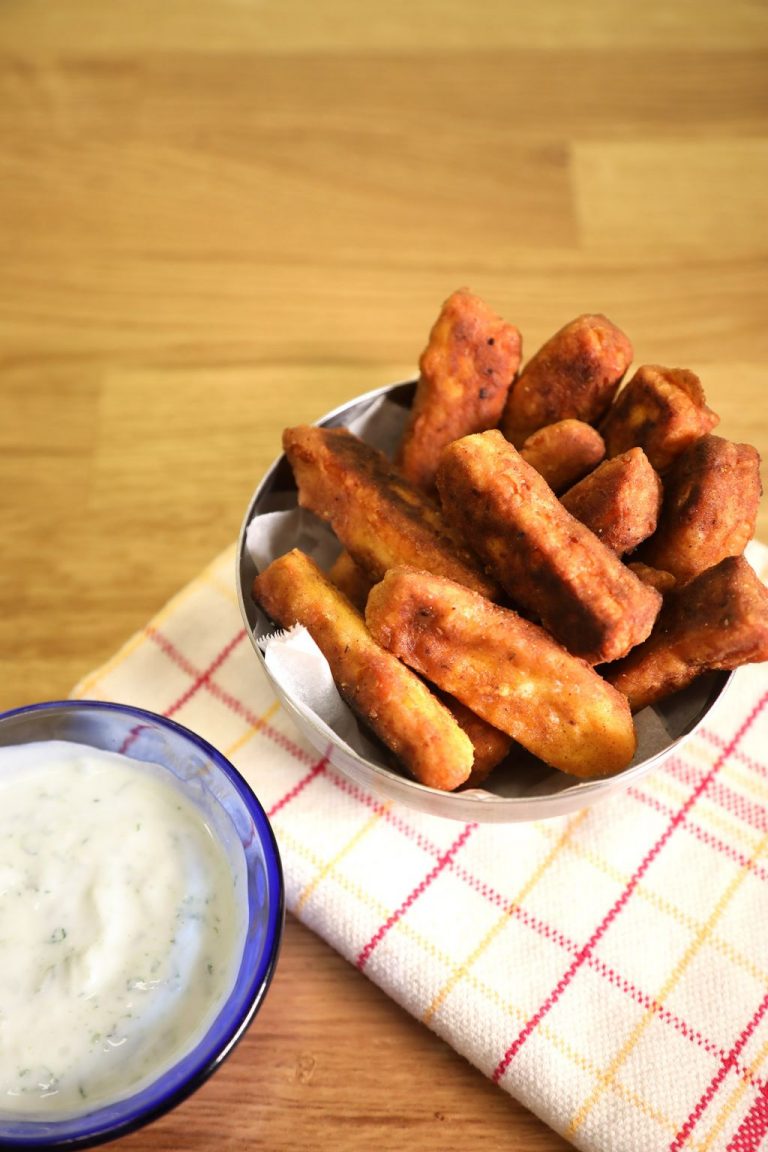
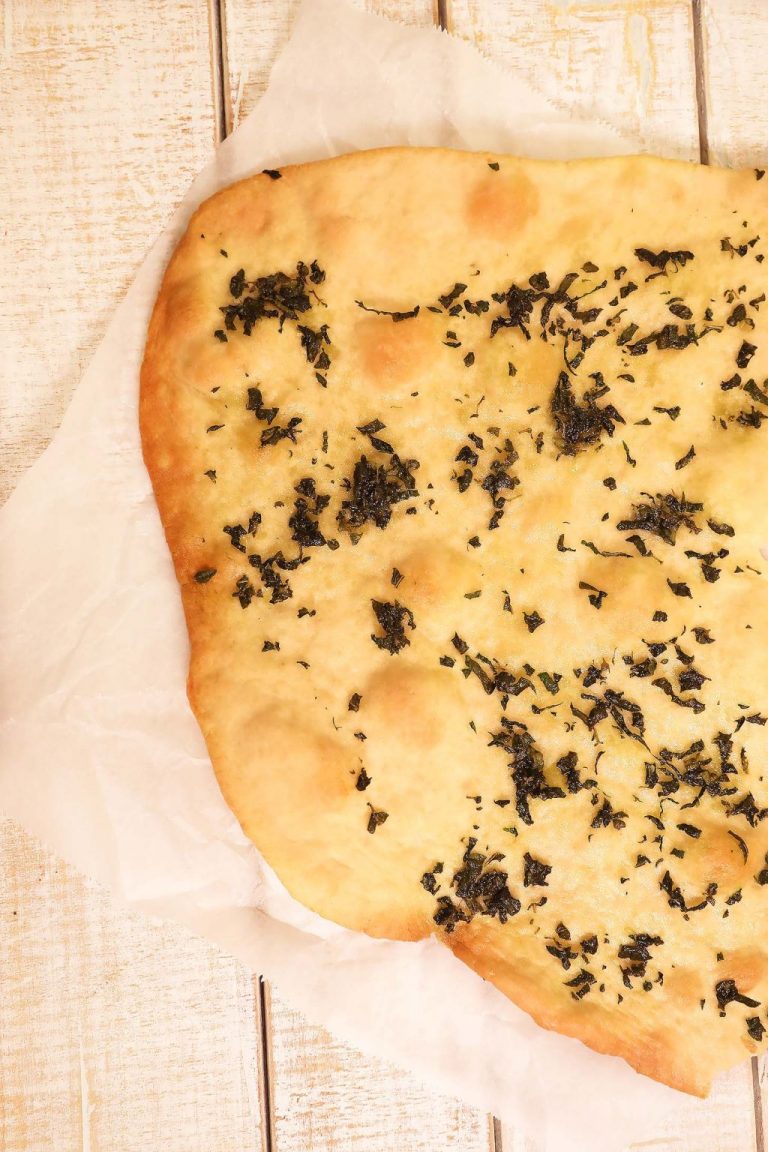
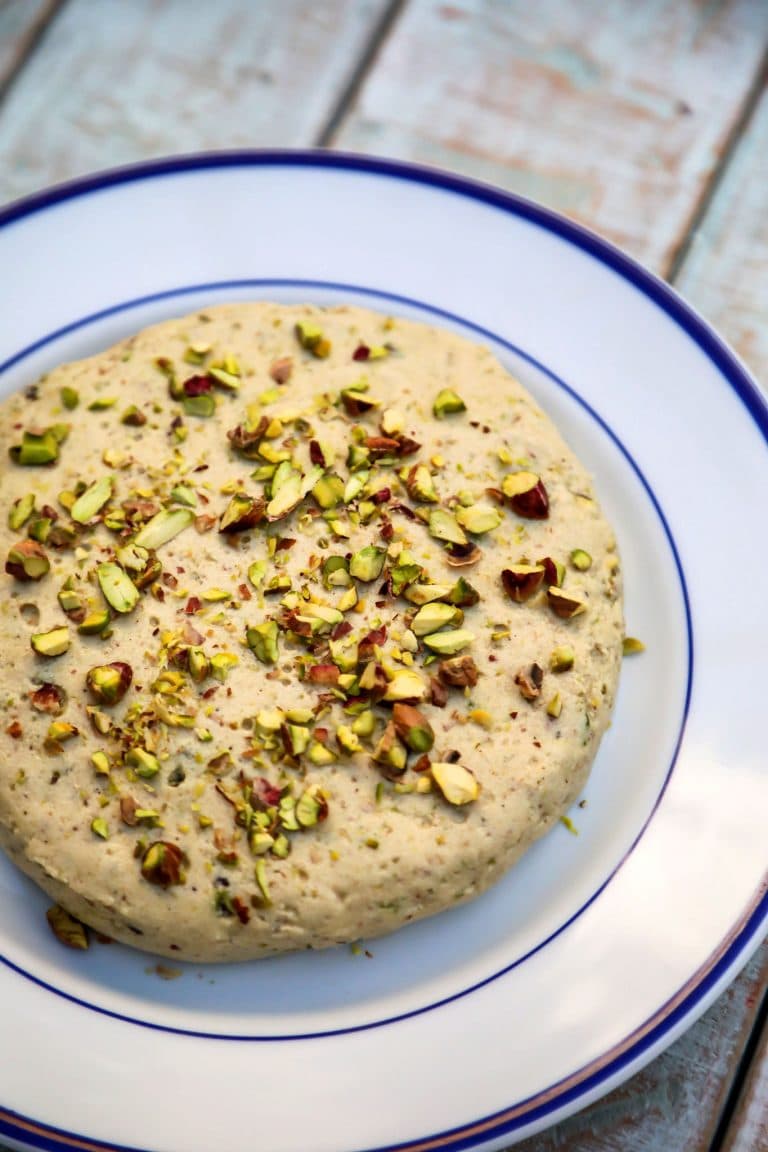
One Comment